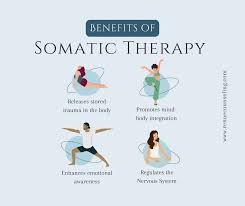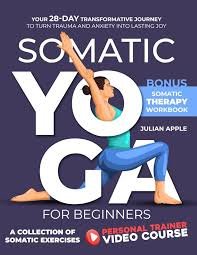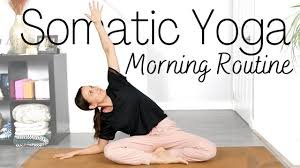Somatic yoga is an innovative practice that integrates the principles of yoga with the somatic approach to movement and awareness. This article delves deep into the essence Somatic yoga of somatic yoga, its benefits, techniques, and how it can transform your mind-body connection.
Table of Contents
Understanding Somatic Yoga
At its core, somatic yoga is about cultivating a deeper awareness of the body through movement and breath. The term “somatic” comes from the Greek word “soma,” meaning the living body. Somatic practices focus on the internal experience of the body, promoting a sense of presence and mindfulness. Unlike traditional yoga, which often emphasizes physical postures and alignment, somatic yoga prioritizes personal exploration and the sensory experience of movement.
The Philosophy Behind Somatic Yoga
The philosophy of somatic yoga is rooted in the understanding that the body holds memories and emotions. When we experience trauma or stress, these feelings can become trapped in our physical structure. Somatic yoga encourages practitioners to release these tensions and rediscover the innate wisdom of their bodies. By fostering an environment of self-compassion and curiosity, somatic yoga allows individuals to reconnect with their physical selves.
Benefits of Somatic Yoga

Engaging in somatic yoga offers a multitude of benefits for both the mind and body. Here are some of the key advantages:
Enhanced Body Awareness
One of the primary benefits of somatic yoga is increased body awareness. Practitioners learn to tune into their physical sensations, leading to a better understanding of their bodies and how they move. This heightened awareness can help identify areas of tension or discomfort.
Stress Reduction
Somatic yoga promotes relaxation through mindful movement and breathwork. By focusing on the body, practitioners can release pent-up stress and anxiety, fostering a sense of calm and tranquility.
Emotional Release
As a practice that emphasizes the connection between body and mind, somatic yoga can facilitate emotional release. Movement becomes a tool for expressing and processing emotions, allowing for healing and transformation.
Improved Flexibility and Strength
The gentle, flowing movements characteristic of somatic yoga can enhance flexibility and strength without the risk of injury associated with more intense physical activities. Practitioners can safely explore their range of motion and build strength in a supportive environment.
Better Posture and Alignment
Through increased body awareness, somatic yoga helps practitioners improve their posture and alignment. This is particularly beneficial for those who spend long hours sitting or engaging in repetitive movements.
Mind-Body Connection
Somatic yoga fosters a profound connection between the mind and body, encouraging practitioners to engage in self-inquiry and reflection. This connection can lead to greater overall well-being and personal growth.
Key Techniques in Somatic Yoga
The practice of somatic yoga incorporates various techniques that support body awareness and movement exploration. Here are some of the key methods:
Breath Awareness
Breath is a central focus in somatic yoga. Practitioners learn to cultivate awareness of their breath, recognizing how it influences movement and emotional states. Breathwork can also serve as a grounding tool during practice.
Mindful Movement
Mindful movement is a hallmark of somatic yoga. Instead of rushing through postures, practitioners are encouraged to move slowly and intentionally, paying attention to sensations and feelings that arise. This approach allows for a deeper understanding of one’s body.
Sensory Exploration
Somatic yoga encourages sensory exploration, inviting practitioners to engage with their bodies through touch, sound, and movement. This can include gentle shaking, swaying, or undulating movements that promote a sense of freedom and expression.
Guided Awareness
Instructors often lead guided awareness practices during somatic yoga sessions. These may involve visualization, body scans, or sensory meditations that help practitioners connect with their bodies and emotions.
Integration of Feldenkrais Method
Many somatic yoga practices incorporate principles from the Feldenkrais Method, which emphasizes awareness through movement. This approach encourages participants to explore new ways of moving, enhancing their overall experience and understanding of their bodies.
How to Get Started with Somatic Yoga

If you’re interested in exploring somatic yoga, here are some steps to help you get started:
Find a Qualified Instructor
Look for instructors who specialize in somatic yoga or have experience in somatic practices. A knowledgeable teacher can guide you through the techniques and principles of the practice.
Create a Safe Space
Set up a comfortable and safe space for your practice. Use mats, blankets, or cushions to support your movements. Ensure you have a quiet environment free from distractions.
Start with Basic Movements
Begin your somatic yoga journey with simple, gentle movements. Focus on breathing and allowing your body to explore different sensations. Don’t rush; take your time to connect with your body.
Incorporate Breath Awareness
As you practice, pay attention to your breath. Notice how it feels as you move, and use it to guide your actions. Breath awareness is a fundamental aspect of somatic yoga.
Listen to Your Body
One of the most important principles of somatic yoga is to listen to your body. Pay attention to what feels good and what doesn’t. If something feels uncomfortable, modify your movements or take a break.
Reflect on Your Experience
After each practice session, take a moment to reflect on your experience. Consider keeping a journal to note any insights, emotions, or changes in your body awareness.
Common Misconceptions About Somatic Yoga
Despite its growing popularity, there are several misconceptions about somatic yoga that deserve clarification:
It’s Just for Flexible People
Many people believe that somatic yoga is only for those who are already flexible. In reality, somatic yoga is accessible to everyone, regardless of their physical abilities. The focus is on personal exploration rather than achieving specific postures.
It’s Not a “Real” Workout
Some may think that somatic yoga lacks the physical intensity of traditional yoga practices. While it may be gentler, it offers significant benefits for strength, flexibility, and overall well-being.
It’s Only About Movement
While movement is a crucial aspect of somatic yoga, the practice also emphasizes mindfulness, breath, and emotional awareness. It’s a holistic approach to well-being that integrates body, mind, and spirit.
The Role of Somatic Yoga in Healing
Somatic yoga can play a transformative role in the healing process. For individuals recovering from trauma or dealing with chronic stress, this practice provides a safe space to reconnect with their bodies and emotions. Here’s how somatic yoga facilitates healing:
Trauma Recovery
Through gentle movement and body awareness, somatic yoga can help release stored trauma from the body. Practitioners often report a sense of relief and emotional release, allowing them to move forward in their healing journey.
Chronic Pain Management
Many individuals with chronic pain find relief through somatic yoga. The emphasis on awareness and gentle movement can help identify and release tension patterns that contribute to pain, fostering a greater sense of ease.
Mental Health Support
The mindfulness aspects of somatic yoga can be beneficial for those struggling with anxiety, depression, or other mental health challenges. The practice encourages self-compassion and presents a means of processing emotions in a supportive way.
Also read How Did Bob Marley Die A Deep Dive into His Legacy
Conclusion
Incorporating somatic yoga into your routine can lead to profound transformations in your mind-body connection. By fostering awareness, promoting emotional release, and enhancing physical well-being, somatic yoga offers a unique approach to self-discovery and healing. Whether you’re a seasoned yogi or new to movement practices, somatic yoga invites you to explore the depths of your body and reconnect with your authentic self.
As you embark on this journey, remember that somatic yoga is not just a practice; it’s a path toward self-awareness, healing, and personal growth. Embrace the journey, and let your body guide you to new horizons of understanding and well-being.


